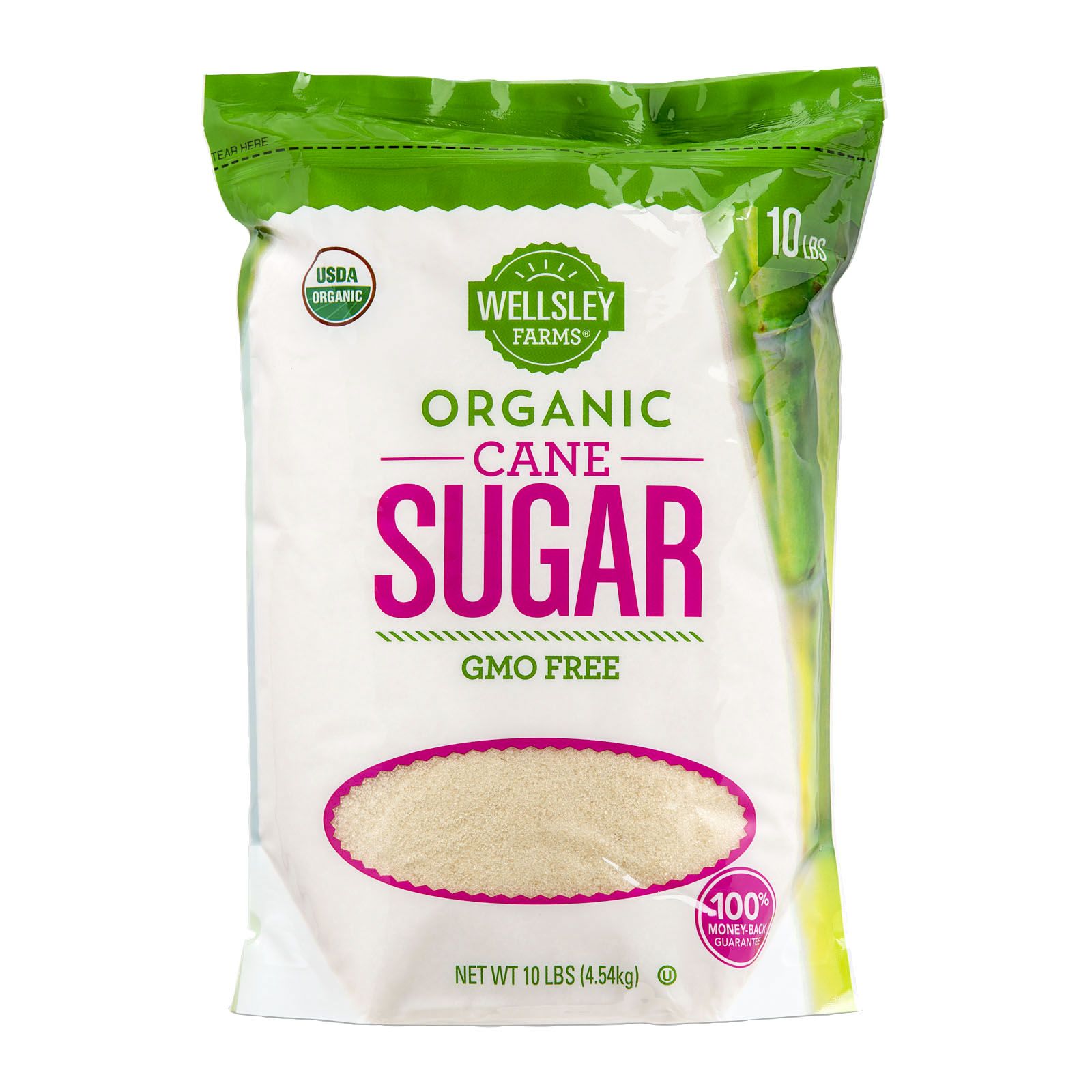An Extensive Overview to the Ecological Impact and Sustainability Practices in Walking Stick Sugar Processing
The ecological influence of walking stick sugar processing provides a complicated variety of obstacles that warrant mindful exam. From soil degradation and extreme water usage to the carbon footprint linked with farming and manufacturing, the repercussions of typical practices are significant. What particular techniques can be applied to strike an equilibrium in between productivity and ecological stewardship?
Overview of Cane Sugar Handling
Cane sugar handling includes a collection of systematic steps that change sugarcane into refined sugar. Initially, collected sugarcane is delivered to processing centers, where it undergoes cleansing to eliminate soil and particles. Following this, the walking stick is squashed to draw out juice, which is then cleared up by eliminating pollutants with home heating and the addition of lime.
The made clear juice goes through dissipation, where water is removed to concentrate the sugar web content. This concentrated syrup is after that taken shape through air conditioning, allowing sugar crystals to develop. These crystals are divided from the continuing to be syrup using centrifugation, resulting in raw sugar. To achieve refined sugar, the raw item undertakes further purification processes, which might include filtering and cleaning to eliminate remaining impurities and shade.
The end product is after that dried out and packaged for distribution. Throughout this whole procedure, preserving performance and quality control is important to guarantee the sugar satisfies sector standards. Each action in walking cane sugar processing not just contributes to the last product yet likewise has implications for resource use and waste generation, establishing the phase for discussions on sustainability and environmental effects linked with sugar production.
Ecological Obstacles of Manufacturing
The manufacturing of cane sugar provides a number of considerable environmental obstacles that warrant interest. One primary concern is the substantial use agrochemicals, consisting of fertilizers and chemicals, which can cause soil deterioration, biodiversity loss, and contamination of regional water sources. The drainage from sugarcane fields usually carries these chemicals into neighboring ecological communities, disrupting marine life and influencing the health and wellness of areas reliant on these water bodies.
An additional challenge is the high power consumption related to sugarcane handling. The boiling and refining phases require considerable warmth, mostly created by burning fossil gas, adding to greenhouse gas exhausts. In addition, the expansive land area required for sugarcane farming can bring about logging and environment damage, more worsening environment modification and threatening wild animals.
Furthermore, the labor techniques in some regions increase ethical problems, as workers may face inadequate working problems and poor earnings. This scenario usually bolsters a cycle of poverty in local neighborhoods. Cane Sugar Processing. Resolving these ecological difficulties is critical for developing more sustainable practices in cane sugar manufacturing, ultimately benefiting both the environment and the communities associated with this sector
Water and Land Usage Impact
Water resources and land usage are critical components in the cane sugar sector that considerably impact the atmosphere. The growing of sugarcane calls for substantial water input, with estimates suggesting that it can consume approximately 2,000 liters of water per kilogram of sugar created. This intensive use water commonly results in depletion of regional water resources, influencing not just the sugarcane ranches however also bordering ecosystems and areas that rely upon the very same water sources for farming and domestic use.

Moreover, land usage for sugarcane growing can bring about logging and the conversion of natural environments into monoculture vineyards. This technique decreases biodiversity, interferes with neighborhood communities, and adds to dirt destruction. The development of sugarcane fields usually elbows in on important agricultural land, producing competitors for sources in between food and biofuel production.
Sustainable practices, such as optimizing watering techniques and carrying out crop turning, are vital to mitigate these effects. By embracing more effective water use and land monitoring techniques, the cane sugar sector can decrease its eco-friendly impact, making certain a balance in between farming performance and ecological preservation.
Greenhouse Gas Emissions
Greenhouse gas exhausts represent a significant ecological worry within the walking stick sugar handling industry, particularly as farming practices increase to satisfy worldwide need. The growing of sugarcane, a plant that grows in exotic environments, depends greatly on synthetic plant foods and pesticides, which add to nitrous oxide emissions. In addition, land-use modifications, consisting of logging for brand-new sugarcane haciendas, launch carbon dioxide saved in vegetation and dirt.
Throughout handling, energy consumption is an additional major resource of greenhouse gas discharges - Cane Sugar Processing. Several sugar mills make use of fossil gas to power equipment and create warm, resulting in considerable carbon go to my blog impacts. Additionally, the transport of raw sugarcane and ended up products includes layers of emissions through gas combustion in lorries
This includes assessing existing farming techniques, refining techniques, and transportation systems to determine areas for renovation and reduction. Attending to greenhouse gas discharges is essential for fostering an extra lasting cane sugar industry in an altering environment.

Lasting Practices and Innovations
Sustainable techniques and developments are progressively essential in the walking cane sugar handling industry as stakeholders seek to minimize ecological impacts while preserving productivity. One substantial improvement is the implementation of incorporated plant management, which enhances resource use by integrating dirt administration, bug control, and crop turning methods. This strategy boosts yield while lessening chemical inputs and maintaining soil health.
Additionally, the fostering of renewable resource sources, such as biomass from sugarcane residues, has actually obtained traction - Cane Sugar Processing. By transforming waste items into energy, processing facilities can reduce their reliance on nonrenewable fuel sources, thus reducing greenhouse gas discharges
Water monitoring practices have also seen improvements through the recycling and reusing of water in handling plants, substantially decreasing freshwater usage. Innovations in innovation, such as accuracy farming, make it possible for farmers to check crop health and wellness and source use extra successfully, making sure sustainable farming techniques.
Additionally, certification programs like Fair Profession and Rain forest Alliance urge ecologically accountable farming techniques and promote social equity within the supply chain. By welcoming these sustainable methods and developments, the walking cane sugar processing market can boost its resilience and add positively to environmental stewardship.
Final Thought
The environmental impact of cane sugar handling provides substantial difficulties, including dirt degradation, high water consumption, and greenhouse gas exhausts, together with moral concerns associated with labor techniques. Dealing with these issues via sustainable practices, such as integrated plant monitoring, renewable resource fostering, and water recycling, is vital. By promoting environmentally accountable and socially fair approaches in sugar manufacturing, the market can reduce its unfavorable results, making sure a more lasting future for both environments and areas associated with this industry.
Walking cane sugar handling entails a series of methodical actions that transform sugarcane into polished sugar. Each action in cane sugar processing not just contributes to the final item however likewise has effects for resource use and waste generation, setting the stage for conversations on sustainability and ecological click here for more effects connected with sugar production.
Greenhouse gas exhausts represent a significant environmental problem within the walking cane sugar handling sector, specifically as farming practices expand to meet global need.Sustainable methods and innovations are progressively essential in the walking stick sugar processing industry as stakeholders seek to minimize ecological impacts while preserving performance.The environmental influence of walking cane sugar handling presents substantial Web Site challenges, including soil deterioration, high water intake, and greenhouse gas emissions, alongside ethical problems associated to labor techniques.
Comments on “Cane Sugar Processing Explained: What Takes Place Inside a Sugar Mill”